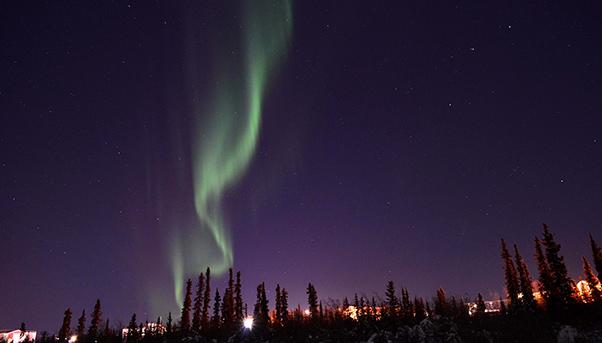
There is a region in the Arctic Circle that – up until a few days ago – was so isolated that its contact with the rest of the world was determined by the seasons.
In summer, the hamlet of Tuktoyaktuk with this region relied on planes or barges coming up the Mackenzie Delta in Canada’s Northwest Territories.
In winter, when temperatures fell below 40 degrees Celsius, this tiny settlement of some 800 souls welcomed trucks arriving from a perilous journey across ice and snow. Since there was no road from Inivuk – the nearest town some 120 kilometres away – drivers had to wait for the waterways to freeze in order to bring food and supplies over land. There was no other way to do it during the winter months, because of the lack of infrastructures.
Not until November 15, when the mayors of Tuktoyaktuk and Inivuk inaugurated to the cheer of residents the opening of a two-lane gravel highway linking the two communities.
The moment had been decades in the making, and it was a historic one for Canada because the highway, built at a cost of CAN$300 million, became the country’s first permanent link to the Arctic Coast.
«This is an important day for the Northwest Territories, and Canada», Northwest Territories Premier Bob McLeod said during the celebrations, which were widely covered by the national media.
McLeod told the CTV News Channel that the highway opened up the world to his people. «If you live in a small community like I have, once the ice road is closed, you feel very isolated», he said. «Now, if you want to go anywhere in Canada, you can drive out… So it really gives you a feeling that you’ve got much more freedom».
That sense of freedom will likely come after Tuktoyaktuk residents drive down the new 138-kilometre highway, pass through Inivuk and get on the Canadian Dempster Highway, which heads south to Whitehorse… and beyond.
Tuktoyaktuk Mayor Darrel Nasogaluak, meanwhile, expected a more immediate – and tangible – impact. He told CTV it would allow children to see their families more often when they studied in other communities. «(Now) they can come home weekends and parents can visit them», he said.
The highway is also expected to bring down the cost of living in the hamlet. With a reliable route open year-round, the cost of food and nearly everything else bought by its residents ought to go down by about CAN$1.5 million a year, equivalent to CAN$1,500 in savings for every man, woman and child, according to Canadian Press, a news agency.
Inivuk, a town of more than 1,000 people, would also stand to benefit, strengthening its role as a regional commercial hub.
Then there is the promise of tourism and the jobs that it could bring. The government of the Northwest Territories estimates an increase of CAN$2.7 million a year.

Construction of the highway began in earnest in 2014. Most of it was done during the winter months because the ground had to be frozen solid to withstand the weight of the trucks and bulldozers.
It was not possible to do it in the summer because the tundra, which is what the ground is called in the Arctic Circle, is very delicate. It consists of permafrost, a layer of earth, rock and ice that can become soft like a sponge when it melts.
So the challenge was to build a highway that did not attract heat in the summer and cause the permafrost underneath it to melt. Otherwise, the highway risked being broken up by the shifting of the ground.
«To protect the permafrost along the proposed Highway alignment, typical ‘cut and fill’ techniques… will not be used for this project», reads a section of the government website detailing plans for the highway. «These traditional construction methods cut into protective layers of surface vegetation and organics, with the possible results of a thawing in the permafrost below».
So workers placed a so-called geotextile fabric between the ground and the gravel and other materials making up the highway to insulate the permafrost and prevent it from going soft in the summer.
Other challenges included bringing equipment to the construction site on barges along the waterways in the summer – given the absence of a road. Then, in winter, having to brave temperatures of 40 degrees below Celsius. The exploits of truck drivers working under these conditions have been documented by the History Channel.
According to the government’s website, the highway is eight to nine metres wide with a 3:1 slope on either side. Single lane bridges were built at stream crossings and culverts in other locations.
The highway has instilled an entrepreneurial spirit among some of the hamlet’s residents. The owners of an inn and a convenience store, for example, are preparing to open the first sit-down restaurant in a decade. «I was just seeing an opportunity with the road coming, I just thought it would be great to do this», one of them was quoted as saying in a report on the website of the Canadian Broadcasting Corporation.

